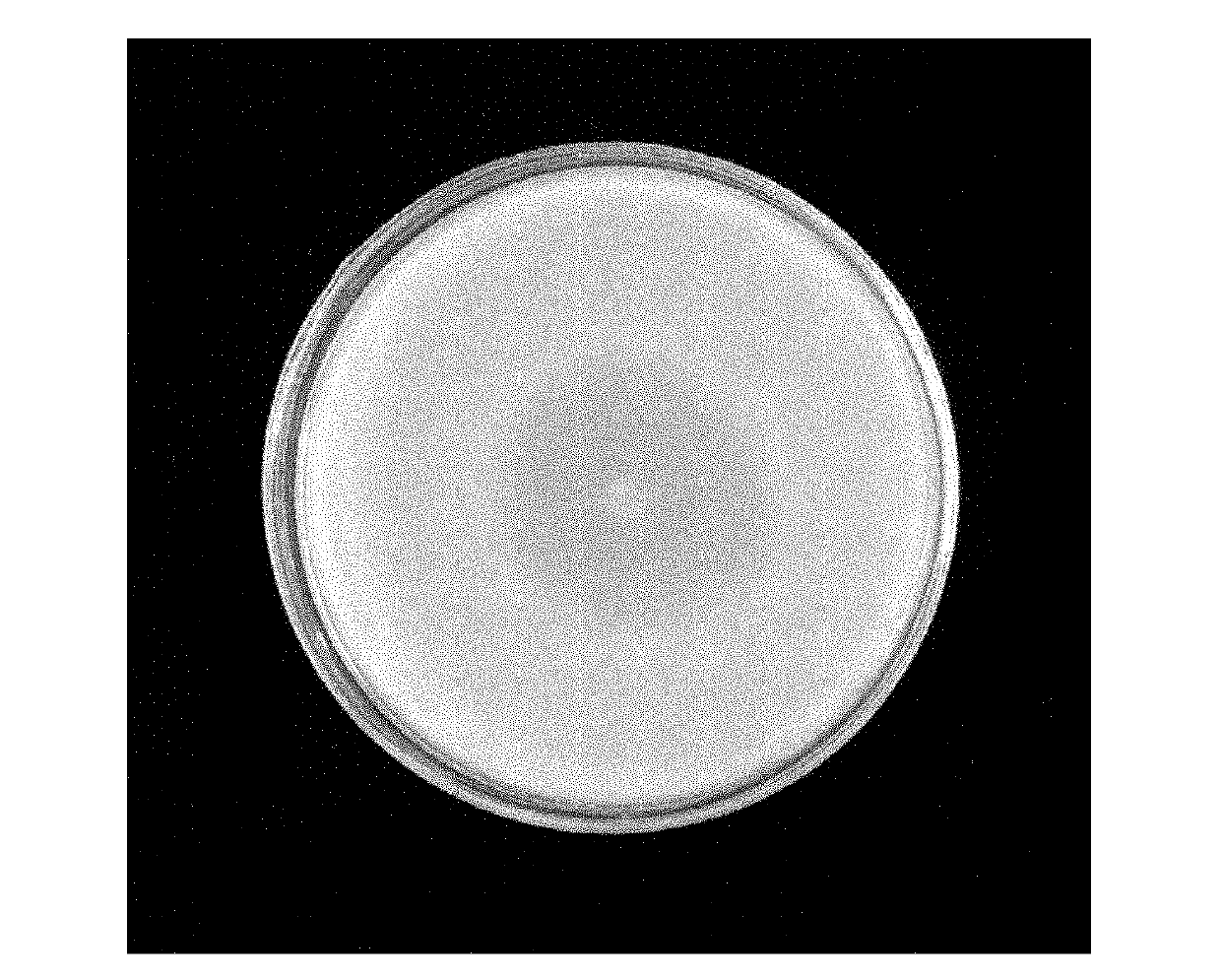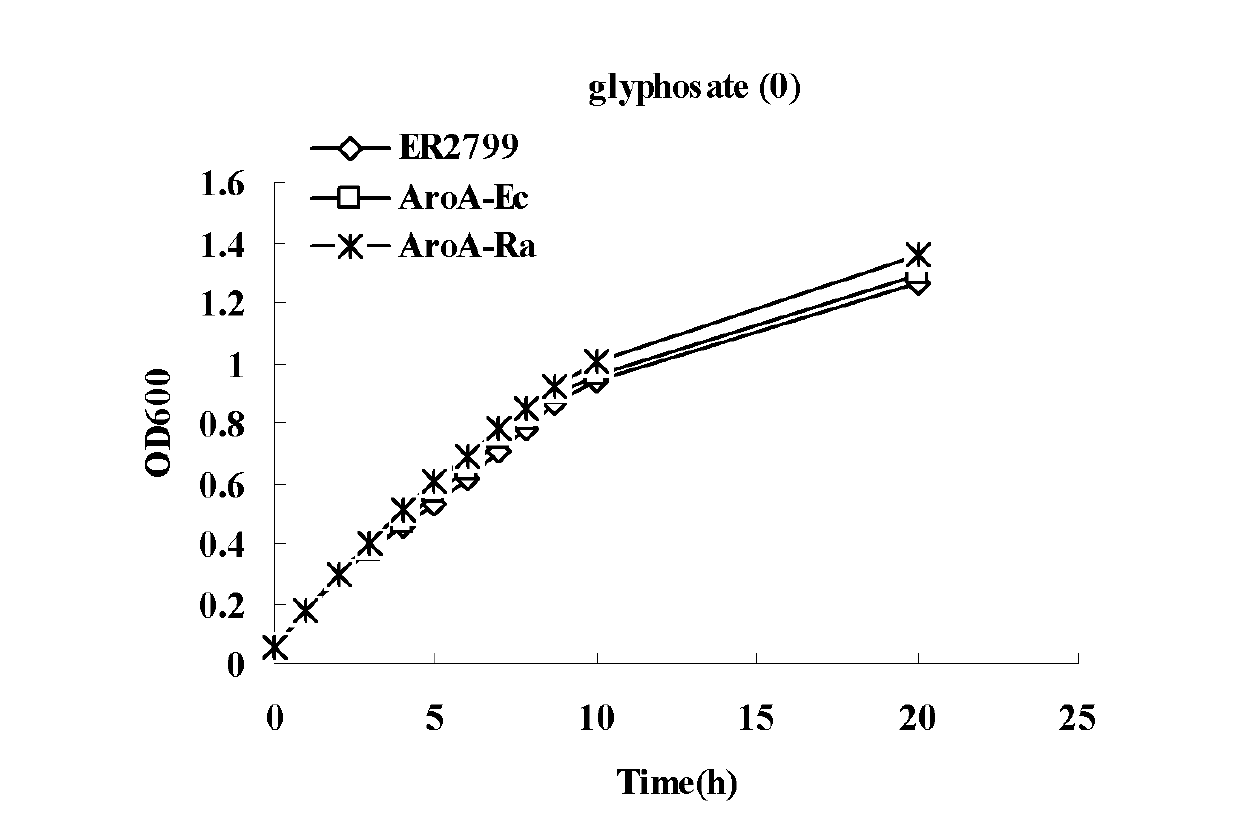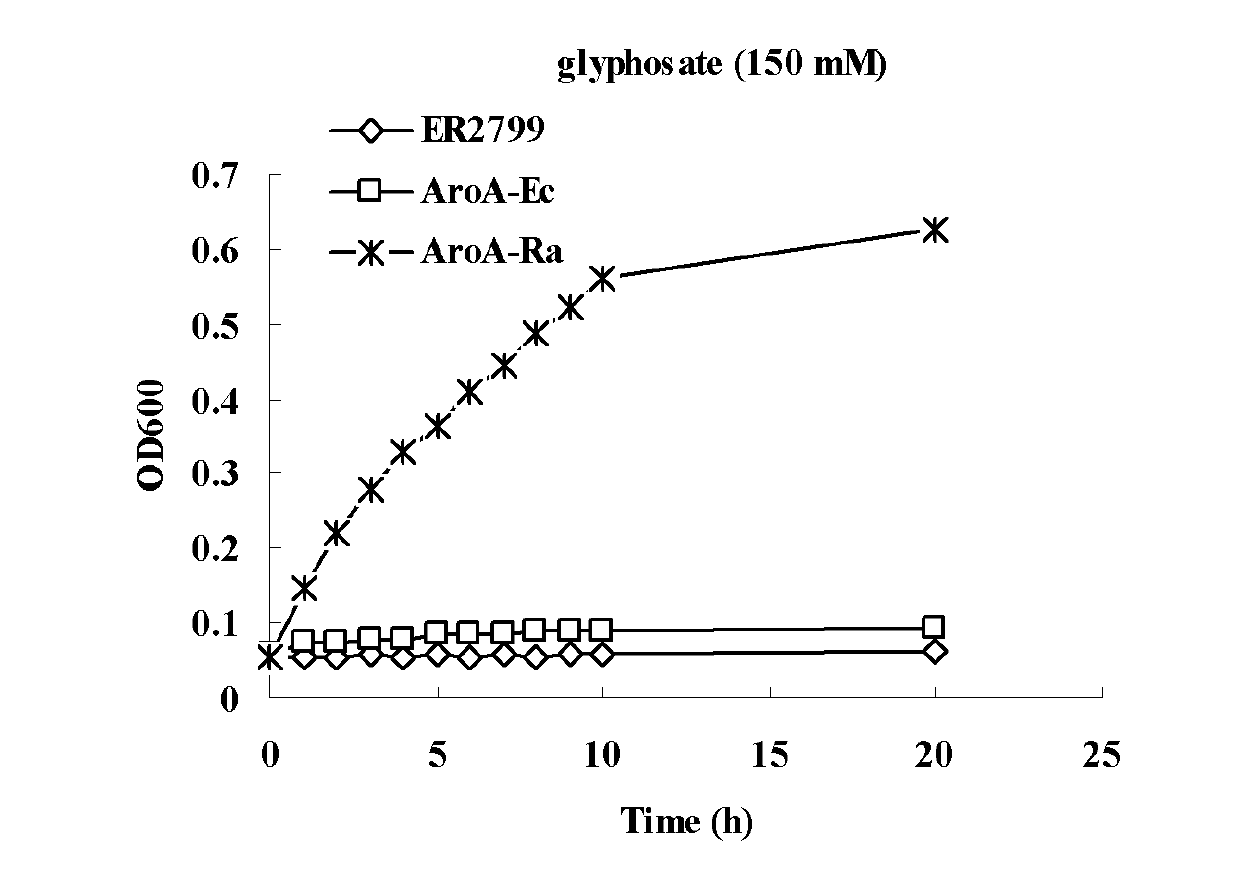Glyphosate-resistant herbicide gene AroA-Ra from grape crown gall antagonistic bacteria rahnella aquatilis and application thereof
An aquatic Lahnella anti-glyphosate technology, which can be used in applications, genetic engineering, plant genetic improvement, etc., can solve the problem of weak protein activity
- Summary
- Abstract
- Description
- Claims
- Application Information
AI Technical Summary
Problems solved by technology
Method used
Image
Examples
Embodiment 1
[0041] Embodiment 1 strain separation
[0042] Take by weighing 1g of the grape root sample 1g that is frequently used in vineyards with crown smear disease, add 0.9% (w / v) sodium chloride solution 1ml, shake and mix at 5000 rev / min, and centrifuge gently at 3000 rev / min. Pour off the supernatant, then add 1ml of 0.9% (w / v) sodium chloride solution, shake and mix at 5000 rpm, let it stand on ice for 10 minutes, draw 150μl of the solution and coat it with LB solid medium containing 60mM glyphosate Cultured in medium for 24h. Inoculate the grown single colony into a test tube with 1.6ml of LB liquid medium, incubate at 28°C for 48h, then draw 150μl of the culture solution and apply it again to the LB solid medium containing 200mM glyphosate for 24h, and finally put Well-growing colonies were selected for further study.
[0043] Cultivate the screened bacterial strains in LB medium at 28°C for 48 hours, dilute the bacterial solution to 108-109 / mL, take 10 μl of the bacterial so...
Embodiment 2
[0044] Extraction and strain identification of embodiment 2 total DNA
[0045] The bacterium single strain that is isolated in embodiment 1 is cultivated 16 hours in 10ml liquid LB medium (5g / L yeast extract, 5g / LNaCl, 10g / L tryptone, phosphate buffer pH7.5), thalline culture The solution was centrifuged at 6,000 g for 5 min to obtain bacterial pellets. These pellets were first frozen at -20°C for 1 h, then washed once with TE buffer (10 mM Tris-HCl, 1 mM EDTA, pH 8.0), and then 20 μl of sterile lysozyme (Sigma-Aldrich) at a concentration of 10 mg / mL was added. Suspend in water and incubate on a shaking table at 37 °C for 1 h.
[0046] Then add 50 μl of 0.5M EDTA, 50 μl of 10% (w / v) SDS and 50 μl of 5M NaCl and shake gently to mix, then add 10 μl of 20 mg / mL protein kinase K (Takara Japan) , and the reaction was incubated at 37°C for 1 h. DNA was extracted with phenol:chloroform:isoamyl alcohol (25:24:1, volume ratio) equivalent to the volume of the culture liquid (1 volume...
Embodiment 3
[0049] Example 3 Isolation and sequence analysis of glyphosate-resistant DNA fragments
[0050] Use different concentrations (0.02-0.5u / μL) of restriction endonuclease Sau3A (Bao Biological Engineering (Dalian) Co., Ltd.) to digest the total DNA of Lahnella aquatica obtained in Example 2 for 20-60 minutes, Then 0.7% (w / v) agarose gel electrophoresis, excise the DNA fragment with a length of 5-7kb, and recover it with a gel kit (Shanghai Sangon Bioengineering Co., Ltd.).
[0051] Select pG251 (CN1338515NCBI) as the expression vector, digest with restriction endonuclease BamHI (Bao Biological Engineering (Dalian) Co., Ltd.) and perform gel recovery.
[0052] First, dephosphorylate the digested vector plasmid to reduce the self-ligation of the plasmid, and inactivate alkaline phosphatase (Sambrook, Molecular Cloning Handbook, 1989), and then combine with the exogenous DNA fragment (ie length A 5-7kb Pantoea agglomerans DNA fragment) connection. Before ligation, use the method o...
PUM
 Login to View More
Login to View More Abstract
Description
Claims
Application Information
 Login to View More
Login to View More - R&D
- Intellectual Property
- Life Sciences
- Materials
- Tech Scout
- Unparalleled Data Quality
- Higher Quality Content
- 60% Fewer Hallucinations
Browse by: Latest US Patents, China's latest patents, Technical Efficacy Thesaurus, Application Domain, Technology Topic, Popular Technical Reports.
© 2025 PatSnap. All rights reserved.Legal|Privacy policy|Modern Slavery Act Transparency Statement|Sitemap|About US| Contact US: help@patsnap.com



